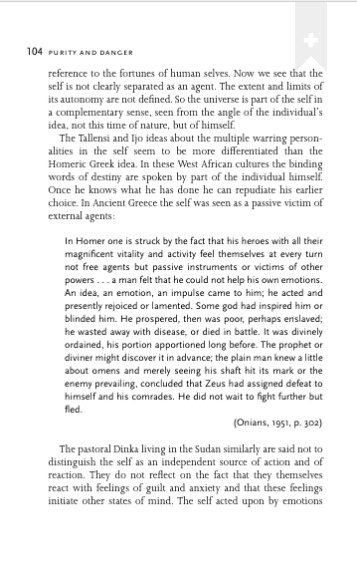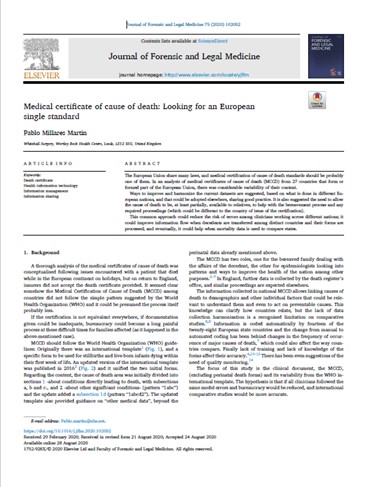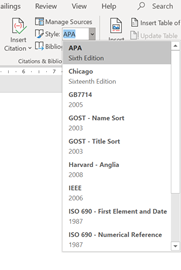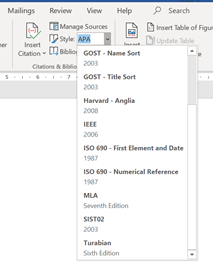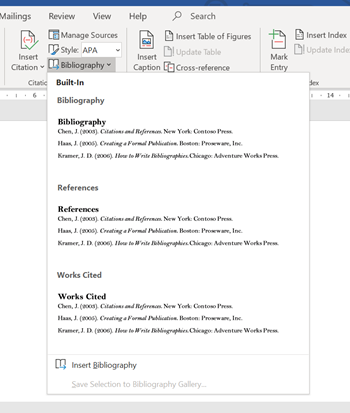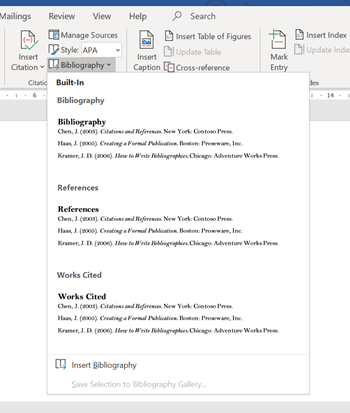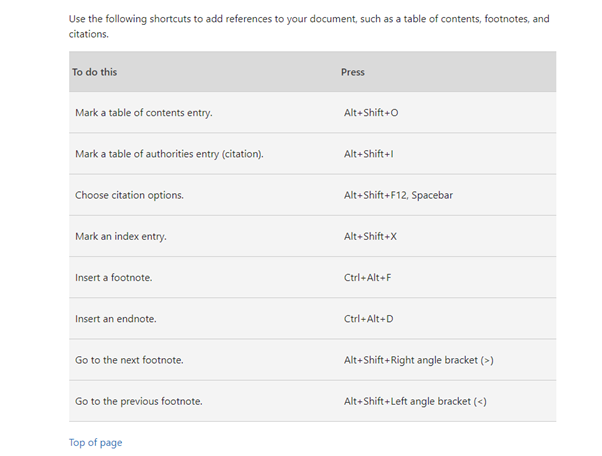The ultimate citation guide
Speak right now to our live team of English staff
What is a citation?
Even professionals have a hard time explaining how a citation and a reference are different. The words are often used interchangeably – but they shouldn’t be. That is imprecise and can lead to confusion. The purpose of this blog is:
- to explain what a citation is;
- to explain the difference between a citation, a reference, and a bibliography;
- to give examples of citation styles;
- and to help you build up confidence in how to do citations in your own writing.
After a concise introduction, we will give some thought to why citations are important and what can happen if you don’t include proper citations when you write. Then we will consider some rather more technical subjects, like what to include in a citation for some of the major styles, and how to use shortcuts in Microsoft Word to do citations.
Let’s start with a working definition of a citation.
A citation is a device used in academic writing to acknowledge the precise source for prior ideas, claims, or statements.
Three types of citation
These are ‘the author-number system,’ ‘the author-date system,’ and ‘the citation-name system.’ The general features of each system can be identified, as follows:
Author-number system
The author-number system was formulated by the International Committee of Medical Journal Editors (ICMJE) to provide a standard system of citation required for publication in medical journals. (Because the meeting convened in Vancouver, you may hear of this system being called the ‘Vancouver system.’)
In this system, citations are numbered consecutively based on when they appear in the text. The first source cited is 1, the second is 2, and so forth. These numbers correspond to footnotes or endnotes, where full details are provided.
In the example below (Lieu 2007: p.288), you can see four citations, numbered from 9 to 13, each of which has a corresponding footnote at the bottom of the page:
To make full use of the citation, you would need to consult the bibliography as well – but we will have more to say about bibliographies later.
Author-date system
The author-date system is also known as the ‘parenthetical’ or ‘Harvard’ system. In this system, the citation is embedded in the text and set off by parenthesis, which is why it’s sometimes called ‘in text citation.’ In the parentheses, the reader finds the author’s surname and date of publication. If the citation is to a specific page, the page is also included in the parenthesis. This system tends to be preferred for publications in arts and humanities as well as in social sciences.
Here is an example (Douglas: p.104) in the in text citation ‘(Onians, 1951, p. 302)’ can be easily identified:
Citation-name system
The citation-name system was developed by the Council of Scientific Editors (CSE). This system resembles the author-number system, with a key difference: the numbers used for citation are generated by an alphabetical list of the authors’ surnames, not by the order in which they appear in the text.
For example, suppose you’re citing 12 publications. Professor Aardvark’s article is first alphabetically, so it is designated as [1]. Dr Zerubbabel’s book is last, so it is designated as [12]. Whenever you cite Dr Z’s book, you use [12]; for Prof. A’s article, it’s [1]. In this system, it doesn’t matter if [12] comes before [1] – something that would never happen in the author-number system.
Here is an example of a publication (Millares Martin 2020) in which you can see how the citation-name system works.
Because the journal is a hypertext (i.e. it’s online), the citations appear in blue. Take a look in the second column and the first citation you find looks like this:
‘among other purposes.3-7’ This means that the prior works relevant to that sentence are items 3, 4, 5, 6, and 7 in the bibliography. Again, there will be more to say about the bibliography later.
Citations and references – how are they different?
Because a citation refers to a prior work, it is easy to confuse how it differs from a reference. It may help to elaborate slightly on the word ‘reference’ to draw out what it means.
When we use the word ‘reference,’ we specifically mean a ‘bibliographic reference.’
Here’s a helpful way of looking at both terms in comparison to one another:
A citation directs the reader to the bibliographic reference.
A bibliographic reference is the text that provides the reader with specific information that can be used to follow up on the prior work that has been cited. The two are closely related and serve the same end. The citation notifies the reader that you have made use of a prior work and directs the reader to further information. The reference supplies further information that enables the reader to consult the prior work.
What about bibliographies?
Another related term needs to be introduced here – a bibliography. The bibliography is the list of prior works cited. Be aware that prior works are not necessarily texts. A podcast, a television broadcast, a performance, a painting, an exhibition, or a DVD are all examples of prior works for purposes of a bibliography.
Style guides (which will be discussed below) provide formats to be used to refer to prior works across the full range.
Finally, it is worth noting that bibliographies can, but need not necessarily, include works that have not been cited in the text. It is common enough in textbooks, for instance, to include references to ‘suggestions for further reading’ or otherwise to indicate general works that have influenced the text. If the bibliography only contains references that have been cited, you might encounter it as a ‘reference section’ rather than a bibliography – but that distinction isn’t hard and fast.
Why is it important to include citations?
This all seems like a lot of trouble so far, doesn’t it?
Even so, it is definitely worth making the effort to do your citations properly, quite apart from the potential dangers you might face if you don’t (we’ll consider those next). There are several reasons you should cite your sources.
The most basic reason is that academic integrity requires intellectual honesty. It is impossible to remain intellectually honest if you are trying to pass off someone else’s work as your own. Any attempt to claim prior work for yourself undermines academic integrity. Identifying prior ideas, claims, and statements is how you give credit where it’s due.
There’s a flipside to giving credit where it’s due: it showcases your own contributions and so makes sure that you get the credit that you’re due. The novel ideas, claims, and statements that you advance in your writing stand out when your citations properly attribute your use of prior work. To put it in slightly different terms, everyone who is involved in scholarly discourse benefits when each participant develops and maintains good habits of properly citing prior works.
Another way that proper citations reinforce academic integrity is by promoting intellectual accountability. When you cite your sources, you are assuming responsibility for making accurate, honest, and fair use of those sources.
Suppose you are reading a journal in our specialist field. The latest issue features a note written by Joe Bloggs and you see that, in that note, Joe make a claim about an interview that you published late last year. If Joe has cited your interview clearly and precisely, then we can have a detailed, constructive discussion – or debate! – as to whether Joe has understood you correctly and represented you accurately. If Joe has only referred vaguely and generally to your work, then his note won’t have done much to advance the state of the conversation. Proper citations make for greater transparency in the exchange of ideas, by making it relatively simple to verify claims.
Another good reason to correctly cite prior works is because, in many academic fields, citations are tracked in order to assess how much impact a work has had. This can be thought of as a way to quantify the credit that is due to a prior work. A consistent record of impactful work is a form of professional recognition that a scholar can use to progress her career, capture funding, and advance her work.
Now, unless you are citing your own prior work, this use of citations doesn’t directly benefit you. But there are indirect benefits. When you cite influential work that you value, you are promoting and enhancing it. This is a small but important way for you to contribute to the way the scholarship develops. What’s more, by helping to direct the development of the scholarship through reliable citations, you are also building up a context in which you yourself will be able to publish your own findings and outputs.
In short, proper citations build up the academic conversation by situating your publication in a network of prior works.
This aspect of citations was put to particularly imaginative use by Susanna Clarke in her debut novel, Jonathan Strange & Mr Norrell (2004). Purporting to be an alternative history of during the Napoleonic era set in England where magic resurges, Clarke generously stocked the novel with references to prior works. Those works were fictional, but the overall effect was that the novel was anchored in a well-developed world – a world that included books, journals, and newspapers.
Here are two representative pages, taken at random, in which you will see the use of the author-number system including footnotes:
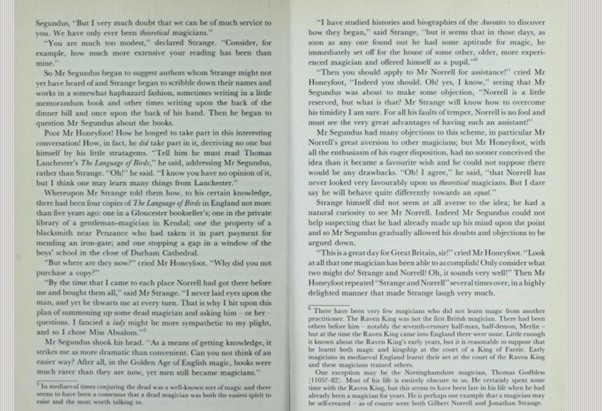
Clarke’s decision to include citations in her novel works precisely because she recognises that citations create an identifiable community of texts.
So much for the good that proper citations can do. Let’s turn now to possible consequences that may follow if you fail to provide correct citations.
What are the dangers of not providing correct citations?
Failure to cite your sources properly amounts to presenting a prior work as if it were your own. As we have just seen, it is a breach of intellectual honesty and a lapse in academic integrity. The result of such a failure is plagiarism.
The word ‘plagiarism’ derives from the Latin word for ‘kidnapper’ – plagiarius. First-century poet Martial used this terms in his Epigrams to complain when someone else had stolen his poetry and was reciting it as his own. The notion of theft is never far away when plagiarism is discussed. And in that poem, Marital makes heavy use of the language of property and legal procedures. Clearly, the offending poet had deliberately done something that is at a minimum poor form.
But before we take the analogy of theft and kidnapping too far, it is important to be aware that you can plagiarise a prior work unintentionally. It doesn’t have to be the result of plotting and scheming. It can be the result of carelessness and poor academic discipline.
To be really clear on the point, you are obligated to correctly cite prior work and failure to do so can result in sanctions.
Plagiarism isn’t simply an uncouth thing to do. Instead, it is a serious violation of academic integrity.
Schools and universities take plagiarism very seriously. Often they subscribe to sophisticated commercial software packages that will compare submitted work to vast databases of prior work. The software checks the latest submission for similarity to prior work – and to work submitted simultaneously – producing a report that is capable of identifying even trivial instances where a standard phrase is used in an appropriate context.
If the software flags up a submission on suspicion of plagiarism, the report will typically go before a specially tasked and trained committee who will review the report. The academic institution will have a code of discipline that will guide the committee in determining how to respond to the report. If the committee determines that the software has not, in fact, identified plagiarism, the matter can be dropped. But if in the view of the committee there is evidence of plagiarism, then according to the powers that regulations give the committee they might (for example) summon the student to a hearing, require the work to be resubmitted, or fail the work with whatever consequences a failing mark has for the student’s course. Serious or repeated infractions can result in suspension or expulsion from the institution.
How can I avoid plagiarism?
In short? Learn how to properly cite your sources! Universities that have robust disciplinary procedures against plagiarism often have equally robust training programmes that instil good habits in regard to citations. Take advantage of those programmes. They will help you learn how to take reliable notes as you are conducting your research, so that you can cite your sources properly and avoid plagiarism.
At the end of this blog, you will also find some helpful hints for using Word 365 to provide citations.
In all events, it is extremely important for you to train yourself to cite your sources correctly. It is the difference between making proper use of idea, concepts, and statements as a responsible member of an intellectual community and simply stealing someone else’s ideas.

What should I include in citations?
Above and beyond the three systems of citation, there are multiple styles for publishing that include guidance for how to format a citation. Sometimes, a particular style is linked to a specific academic subject.
For example, OSCOLA is used extensively and (to our knowledge) exclusively in legal writing in the UK. APA was initially the preferred style for publications in psychology, but it has wider application. Harvard and MLA styles are widely used throughout the humanities. The Chicago Manual of Style is a recognised standard reference for publishing generally, and it provides options for various systems.
Let’s take a few examples from each citation style, so that you have some sense of what any citation should include.
How to cite a book
APA
Applebaum, A. (2020). Twilight of Democracy. Allen Lane.
Harvard
Applebaum, A. 2020. Twilight of Democracy. London: Allen Lane, Penguin Books.
OSCOLA
A. Applebaum, Twilight of Democracy (Allen Lane 2020)
How to cite an essay in an edited book
APA
Rowbottom, J. (2015) A Trump Card Which Sometimes Wins: Lord Hoffmann, Free Speech and the Media. In P.S. Davies & J. Pila (Eds.). The Jurisprudence of Lord Hoffmann (pp. 137–160). London: Hart Publishing.
Harvard
Rowbottom, J. (2015) ‘A Trump Card Which Sometimes Wins: Lord Hoffmann, Free Speech and the Media’, in P.S. Davies & J. Pila (ed.) The Jurisprudence of Lord Hoffmann. London: Hart Publishing, pp. 137-160.
OSCOLA
J. Rowbottom, ‘A Trump Card Which Sometimes Wins: Lord Hoffmann, Free Speech and the Media,’ in P.S. Davies and J. Pila (eds), The Jurisprudence of Lord Hoffmann (Hart Publishing 2015)
How to cite a journal article
APA
McGlynn, C. (2006). Families, partnerships and law reform in the European Union: balancing disciplinarity and liberalisation. Modern Law Review, 69 (1), 92-107.
Harvard
McGlynn, C (2006) ‘Families, partnerships and law reform in the European Union: balancing disciplinarity and liberalisation’, Modern Law Review, 69(1), pp. 92-107.
OSCOLA
C McGlynn, ‘Families, partnerships and law reform in the European Union: balancing disciplinarity and liberalisation’ (2006) 69 (1) MLR 92-107.
How to cite a newspaper article
APA
Herrera, I., Kurmanaev, A., Romero, T. and Urdaneta, S. (2020, November 19) They championed Venezuela’s revolution. They are now its latest victims. The New York Times. https://www.nytimes.com/2020/11/19/world/americas/venezuela-maduro-critics-repression.html
Harvard
Herrera, I., Kurmanaev, A., Romero, T. and Urdaneta, S. (2020) ‘They championed Venezuela’s revolution. They are now its latest victims’, The New York Times, 19 November, p. A1
OSCOLA
Isayen Herrera, Anatoly Kurmanaev, Tibisay Romero and Sheyla Urdaneta, ‘They championed Venezuela’s revolution. They are now its latest victims’ The New York Times (New York, 19 November 2020) https://www.nytimes.com/2020/11/19/world/americas/venezuela-maduro-critics-repression.html accessed 20 November 2020
What can be noticed at a glance is that all of these examples fall out broadly comparably: first the name of the author, then the title, then the publication details. OSCOLA is distinct from both APA and Harvard because, in OSCOLA, the date of publication is reported with the other publication details; for the other two, which make extensive use of parenthetical citations, it is sensible that the author’s name and the year should appear close together. The intricacies of citation can be particularly challenging if in your writing you find yourself switching between different styles. But with practice, you will become proficient at doing proper citations.
Microsoft Word shortcuts for citations
If you are using Microsoft Word for writing, you will be happy to hear that many useful resources are bundled in with the programme. A survey of the relevant features brings this blog to a close.
In the first instance, click the References tab in the tool bar. The facilities on offer go well beyond what is discussed in this blog and your time spent familiarising yourself with all of them will not be wasted! For our purposes, two features are worth special notice. First, check out the Footnotes section. Here, it is possible to insert endnotes or footnotes quite quickly, to renumber them, and to navigate around them. Be sure to notice the arrow that can be used to open a separate menu. That menu gives you control over additional settings.
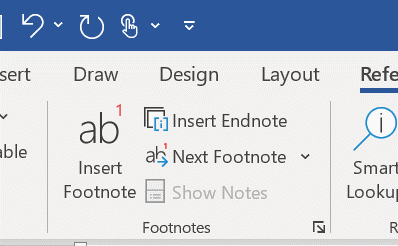
The next section – Citations & Bibliography – is even more useful.
There are several features here that can save you a great deal of effort. First, note that there is a pulldown menu by “Style” – for example Harvard, one of the styles that this blog has discussed in some detail. There are other styles (most of which this blog hasn’t discussed as they’re not widely used), built into the package:
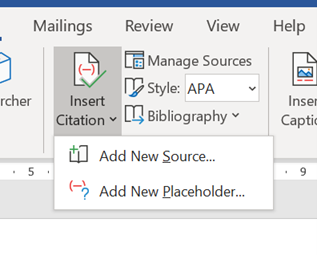
After you have chosen the style you prefer, the icon “Insert Citation” enables you to input the relevant data. Click ‘Add New Source’ and you will be prompted to supply the author’s name, date of publication, and other elements previously discussed in this blog. Word automatically formats the citation in line with the style that you have chosen.
Finally, you will notice that there is an option labelled ‘Bibliography’. If you pull down that menu, you will find that Word is pre-equipped with options for formatting your bibliography for you.
These resources are complemented by shortcuts that you can also use to access the options using hotkeys. Courtesy of Microsoft Support (n.d.), here is a table of handy shortcuts that will make things slightly easier for you as you become proficient in using the software:
You may find that the hotkeys are slightly more cumbersome at first, than using the menus. But as you make more and more use of them, you will find that certain operations come almost immediately – inserting a footnote, for example. Make use of these resources.
And don’t forget to cite your sources. And provide a reference section. Here’s the one for this blog:
Reference section
Clarke, S. (2004) Jonathan Strange & Mr Norrell. London, Bloomsbury.
Microsoft (n.d.) Keyboard shortcuts in Word, Available at: https://support.microsoft.com/en-us/office/keyboard-shortcuts-in-word-95ef89dd-7142-4b50-afb2-f762f663ceb2#bkmk_referenceswin (Accessed: 20th November 2020)


